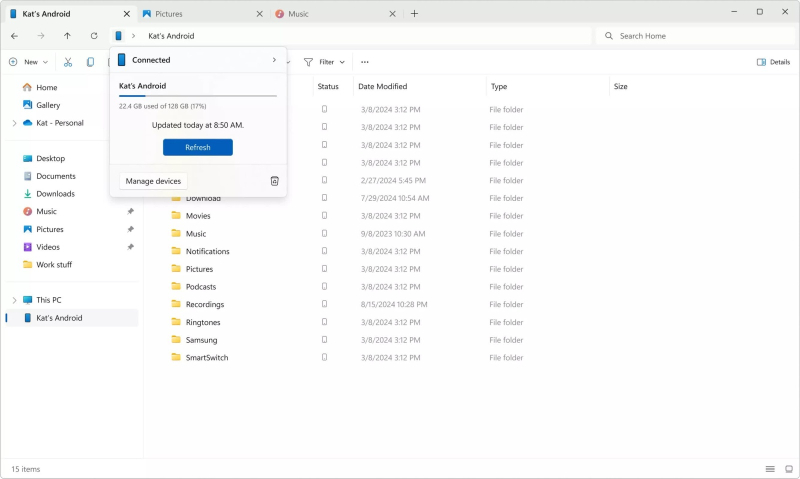Microsoft has introduced a new feature for Windows that will significantly simplify the work with mobile devices on Android. Windows users will now be able to access the storage of their Android device directly through Windows Explorer without connecting their smartphone with a cable. The new feature began rolling out in October and is now available to both Windows 10 and Windows 11 users.

Image source: techspot.com
Windows already communicates with Android devices using the Connect to Phone app, and Microsoft continues to develop cross-platform communication and even deeper integration between Android devices. Android in Explorer is part of broader mobile device management functionality with the Cross-Device Experience Host, which is updated through the Microsoft Store.
To use the new feature, devices must meet certain requirements. Requires Android 11 or later and Link to Windows app must be updated to at least version 1.24071. Additionally, you need to install the latest updates for Windows 11 or Windows 10 and update the Device Connectivity Hub.
Once all the required components are updated, users can wirelessly manage files on their Android devices directly from Windows Explorer via a Wi-Fi connection—no USB connection required. Windows users will see their Android phone as a shortcut in the File Explorer sidebar.
Users can rename, copy, move and delete files on their Android devices directly from their Windows PC. Deleted files are moved to the appearing Recycle Bin folder on your Android device, where they remain for 30 days before being automatically deleted.

One of the advantages of wireless file management from a PC is the transfer speed – it can reach 1.2 Gbps, which makes the new feature very competitive compared to a USB connection. Integration with Windows Search allows you to search for files on Android devices directly from the taskbar.
It’s worth noting that while Android in File Explorer complements the existing Link to Phone app, it works independently, so users don’t need to activate Link to Phone to use it.